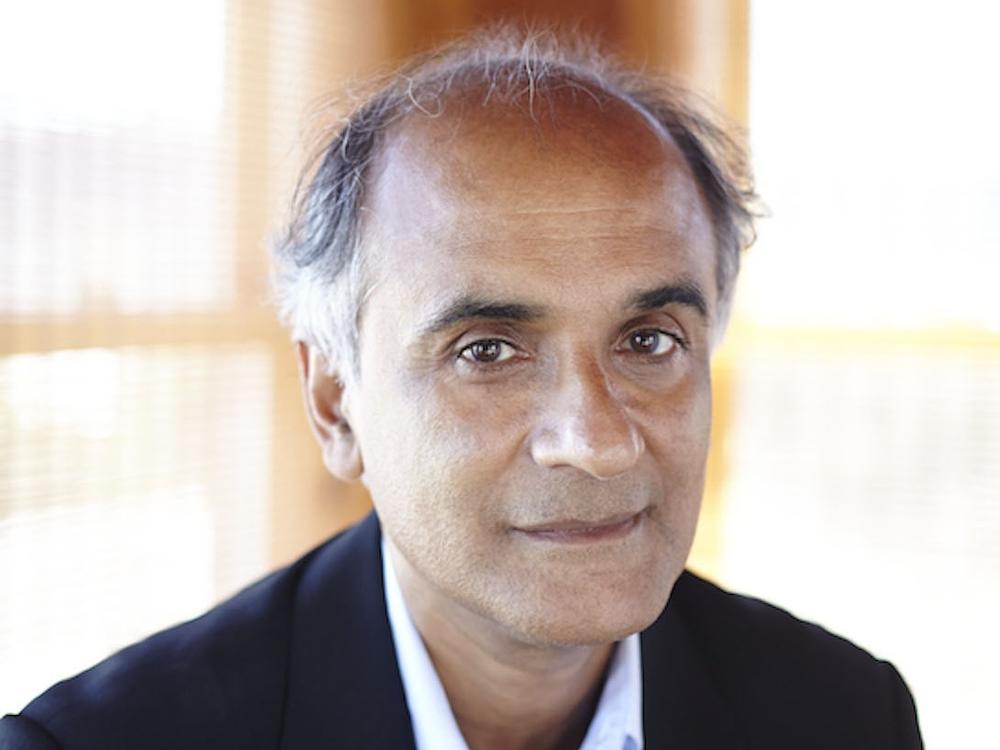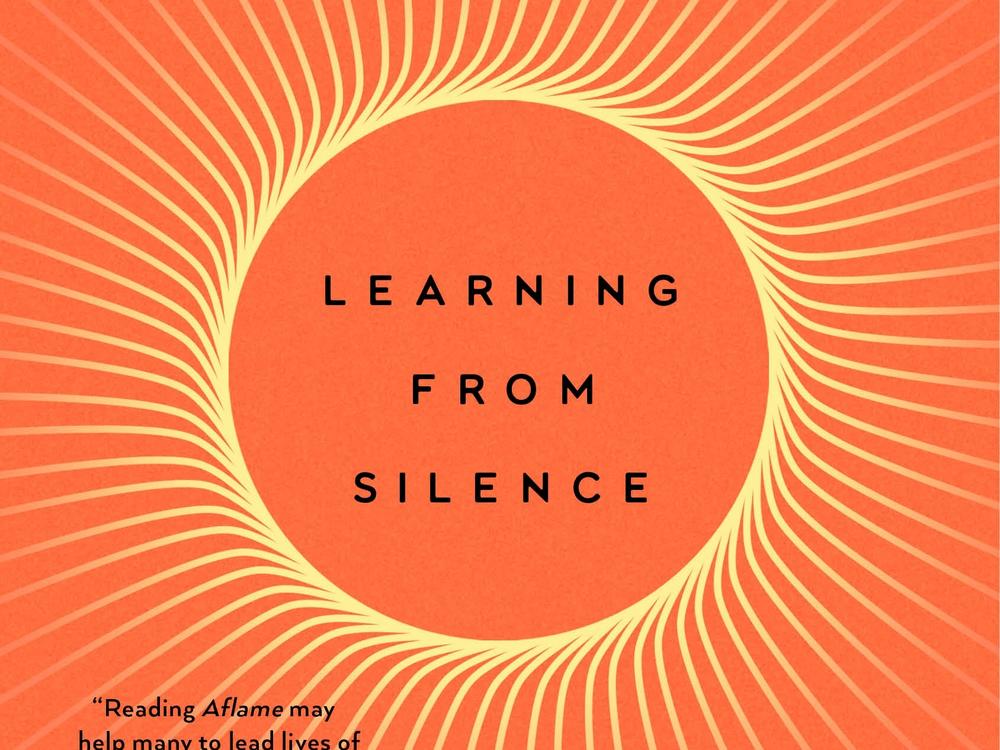Section Branding
Header Content
Years ago, writer Pico Iyer lost everything in a wildfire. This is what he learned
Primary Content
Southern California families who have lost everything the in recent wildfires are reckoning with what it means to start over. Writer Pico Iyer's eerily timed memoir, Aflame: Learning from Silence, speaks to that experience.
In 1990, Iyer was alone in his mother's house in Santa Barbara when a wildfire swept through the region. Suddenly, it seemed, he was surrounded by flames.
"I literally didn't have time to pick up the passport that was two feet away," Iyer says. "I just grabbed my mother's cat, raced into a car and drove down the driveway, not thinking that the car was probably the worst place to be."
Trapped in the car with a panting cat on his lap, Iyer says he tried to focus on keeping the cat alive — and not on how vulnerable felt as as he watched the house he had just escaped from burn to the ground.
"I could see the flames systematically making their way through our living room, and then moving down to my bedroom where all my childhood mementos and photos and toys were, and then going on to my office and then really reducing my next eight years of writing — my next three books were all in handwritten notes — to ash," Iyer says.
After three hours, Iyer and the cat were rescued by a good Samaritan who was traveling around in a water truck with a hose. But he and his mother had lost everything.
With nowhere to go, Iyer began sleeping on a friend's floor. Then he heard about a Benedictine monastery in Big Sur, Calif., that accepted a few guests at a time. Though he's not Christian, Iyer felt welcomed.
"It was the fact of being stripped down to nothing that made a Catholic monastery a seductive place," he says. "Suddenly in the monastery I realized I wasn't the center of the world and that the sort of 'me' part disappeared and the world part became very strong."
In the decades since the fire, Iyer has returned again and again to the Benedictine monastery. He writes about his experiences and the power of silent meditation in Aflame.
Interview highlights
On how the fire changed his perspective on belongings
As soon as a fire truck finally got to us and told me that it was safe to drive downtown, I went straight to a supermarket and I bought a toothbrush. And that toothbrush was literally the only thing I had in the world. ... When the insurance company offered to replace my possessions, I realized I could live without 90% of the books and clothes and furniture that I'd accumulated, in some ways I could live much closer to the life I'd always lived, an uncluttered life. ...
I replaced very, very little. And my mother and I were living in a temporary apartment for three and a half years. So in any case, there wasn't much room. But I realized actually how little one needs to survive and that luxury is not really a matter of how much you have, but how much you don't need. And suddenly I awoke to the sense I didn't need a huge amount.
My mother was 59 at the time and I was 33. And so the notion of starting again was not something she could entertain. It was as if her whole past had been wiped to the ground and there was very little to look forward to. And in my case, my past had been wiped to the ground and my future as I had anticipated it had been eliminated. But at 33, of course, it's much easier to start afresh. And so I was fortunate in my circumstances.
On the appeal of practicing silence at the monastery
I think the particular beauty of this silence is that it's not an absence of noise. It's almost a presence as if years of prayer and meditation, not just in this monastery, but in every convent and monastery, have created these transparent walls where suddenly the world comes to you with greater immediacy. And so the curious thing was, as I drove up to the monastery, as usual, I was conducting arguments in my head and fretting about deadlines and worried about my tax return and concerned about my aging mother. And I stepped into the silence and all of that fell away. It was as if little Pico and his tiny thoughts were left down on the highway. And instead I was in the midst of this beautiful scene above a radiant coastline, and I was in some ways released from myself, I felt, and released from my endless chatter.
On solitude as a gateway to compassion for others
When I first went there, I didn't realize that solitude was a gateway to compassion. I'm an only child. I spend much of my time alone at my desk. I love being alone. And what's not to love about being alone in radiant Big Sur? But the more times I stayed there, the more I realized first that I was never alone, because my friends and my loved ones lived more powerfully inside me in that cell than they do when they're in the same room or when I'm driving down the freeway with a thousand things on my mind. But also that the only point of being there was to be a better friend to them. And that's where witnessing the sense of community and the compassion that the monks exemplify really made a difference.
On what silence taught him as a writer
I think anybody listening to this knows that the time they share with a loved one often is silent, and that can be the richest, deepest time. I think, as a writer whose life depends on words, it's shown me how inadequate words are. It has made me distrust words and made me see how we can use words as weapons and shields and defenses. And so I most trust … the person who lives on the far side of words, I'm more trustworthy when I'm saying nothing at all than when I'm speaking.
On the Big Sur monastery facing threats from fires over the years
They are making a commitment to living far from the world at the grace of God, at the mercy of the heavens, not knowing what will come next. So, though it's more a conscious decision to live on the edge of the world and in the middle of the wilderness, I remember there's a great Zen monk who says "a monk's duty is to live on the edge of the abyss." And that's what my Benedictine friends are doing in Big Sur.
Therese Madden and Susan Nyakundi produced and edited this interview for broadcast. Bridget Bentz, Molly Seavy-Nesper and Beth Novey adapted it for the web.


